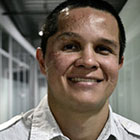
Ask Questions Like a Child
Questions have the power to shift perspectives and encourage innovation. Questions build the platform for learning and lay the foundation to collect and analyze information to identify patterns and insights. Questions can create a framework for developing concepts and bringing new ideas to life. Questions encourage change in process and procedures. And questions can help employees grow and understand how they can contribute to the overall success of a business. Business leaders have the responsibility to ask the right questions—to create a working environment that encourages curiosity—a place where people are free to question the status-quo and to experiment with new approaches.
Alison Gopnik once said, “Children are the research and development division of the human species”. The perspective in which children view the world is one we can learn from—looking at everything as if they’ve seen it for the first time. Children don’t have biases—everything is open to exploration. Asking provocative questions, they challenge the status quo with uncommon intensity and frequency, allowing teams and businesses the opportunity to reframe their challenges. Leaders have the unique opportunity to inspire childlike curiosity by asking questions that engage creative thinking. Encourage teams to ask open-ended questions such as how, why and what that lead to generating solutions. Leaders should create an environment that allows for questions to be asked and answered in an honest and open forum. Ensuring that team members know there is no right or wrong answer will help people shift their perspectives and challenge traditions.
During the next brainstorming session ask the following questions:
What are we missing?
By simply scoping the landscape for gaps and opportunities can help find ways to enhance a solution. Encourage teams think beyond typical research methods like questionnaires, interviews and surveys and get outside the office to explore. This is a valuable exercise to help uncover creative opportunities and show how a product or service might complement a user’s behavior. There is a lot to learn from direct observation. Combine traditional research methods with curious feet on the ground.
What are we really trying to do?
Focusing directly on the problem ensures we’re concentrating on the right solution. Time must be devoted to holistically understand the challenge at hand. Taking a step back to ask, “What is it that we are really trying to do?” will help reframe the challenge for direct success.
What can we learn from exploring domains outside of our industry?
Most organizations don’t have a pool for generating new ideas. Their pool is made up of the usual suspects—competitors and existing customers. Breakthroughs are usually found when solutions are borrowed from other domains and adapt to one’s own. Generating new ideas is a key activity businesses must do consistently—not just when the case for innovation is knocking at the door. Remember, solutions that are common in one domain may be groundbreaking in another. When presented with a challenge, knowing what to ask is the difference between doing more of the same and doing something extraordinary.
Just like children are equipped with questions about what’s happening around them, businesses on the path to transformation also equip themselves with an arsenal of questions they can use to take on challenges. Leaders that ask the right questions and encourage their employees to do the same stimulate creative thinking and drive innovation throughout the organization. Better questions lead to better answers.


Uncommon Person: Chad Hutson

Our Internal Learning & Impact at Bulldog Drummond

The One Decision by Employers in 2021 that Means Everything

What I Wish I Knew

Standing Up Inside

Uncommon Person: Gregg Imamoto

Five Things Every Company Should Know about ESG

Redefining Value

Uncommon Person: Chris Baréz-Brown

It’s Time For A Whole Lotta Common Good

Did You Choose Humanity?

Uncommon Partnership: Violux

Here’s How

Uncommon Person: Santhosh Nair

Designing Strategy For A Complex World

Responsibility & Relevance for Brands

